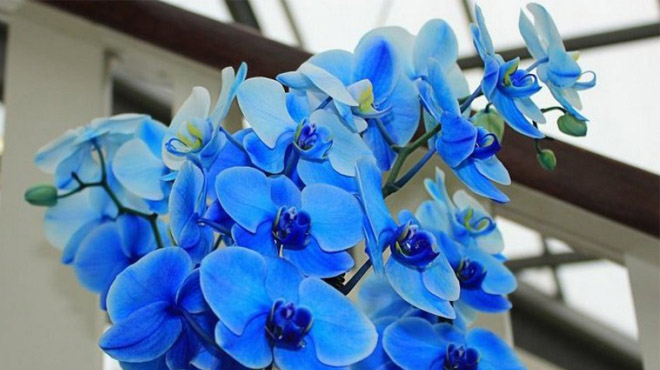 Orchids are perhaps the most attractive plants in the world; they are popular among flower lovers in every country. There is nothing surprising in this - petals of an unusual shape, size and the fact that they grow quite quickly - contribute to their selection from many other indoor flowers. However, the most original orchid is, of course, blue phalaenopsis.
Orchids are perhaps the most attractive plants in the world; they are popular among flower lovers in every country. There is nothing surprising in this - petals of an unusual shape, size and the fact that they grow quite quickly - contribute to their selection from many other indoor flowers. However, the most original orchid is, of course, blue phalaenopsis.
Content
Description and characteristic of phalaenopsis blue
Phalaenopsis orchid is a plant that grows on tree branches and feeds using aerial roots. Leaves of pronounced green color have an elongated shape and a shiny surface, located in the same way as in many other types of orchids - in two rows. The stems of plants are short, and the peduncle is long, sometimes reaching 1-1.5 meters.
There is no specific schedule according to which phalaenopsis blooms, since it grows in tropical forests. In most cases, flowering is observed in late spring, because at this time there is more natural light.
Propagation of phalaenopsis occurs by the vegetative method. To do this, cut side shoots, extending from the peduncle or rosettes of leaves. After the first roots are formed on the shoot, you can plant it in your pot.
Does phalaenopsis happen in blue
The answer to such a question is likely to disappoint lovers of exotic plants, since in nature there is no such shade of buds of this variety of flowers. This is due to the fact that phalaenopsis lacks a gene responsible for the blue color of the petals. When you see such a plant with blue flowers on the counter of a flower shop, you should know that they are painted.
An orchid with large white flowers and a yellow edging is taken as the basis. In most cases, in order to stain it, injections with a dye are injected directly into the peduncle or its base. Sometimes phalaenopsis begins to be painted, pouring it with tinted water, then not only the flowers, but also the leaves and the root system become blue.
See which ones exist types of orchids.
Does Phalaenopsis happen in purple
But flowers with a blue-violet color of the petals can be seen. In the natural environment, the closest to the blue hue is observed in orchids of the Wanda genus, which includes more than 50 species. On these flowers buds are formed, the petals of which have a lilac hue diluted with white specks.
Does phalaenopsis happen in blue
For many years, breeders conducted numerous experiments, trying to bring out orchids of unusual colors. Achieve blue color came from scientists from Japan. They introduced the phalaenopsis, which was given the name Royal Blue. The plant actually had a bright blue tint. To obtain such a color, breeders introduced the Kommeline orchid gene from Asia into the white flower of the species Aphrodite. The introduced gene was responsible for the blue color of the petals. Thus, the resulting hybrid began to bloom with buds of the desired color.
This variety of orchids abundantly blooms in small flowers, the size of which does not exceed 5 cm. Up to 30 buds can form on one stem.
Such an orchid is an exclusive flower; it is currently impossible to meet it in the store.
How the blue phalaenopsis orchid appeared
The world's first blue orchid was exhibited at an international exhibition held in America. The flower aroused great interest among people, and just a few months after the event, Phalaenopsis blue (Royal) was presented at the Dutch flower contest.
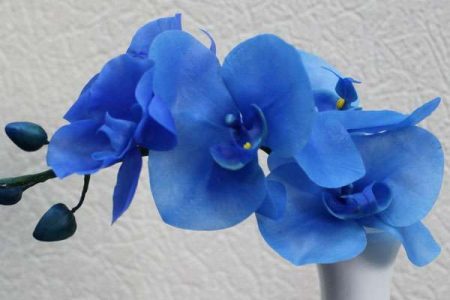
It should be said that manufacturers, not hiding, say that such a shade is a consequence of coloring with the help of secret technology that has received a patent. Accordingly, in the future, the orchid will bloom with white flowers.
Blue Phalaenopsis Care Rules
Home care for blue orchid has no significant differences from caring for other types of this flower. The main condition for the successful growth of blue phalaenopsis is to ensure optimal humidity, heat and light.
The necessary level of humidity can be achieved by regularly spraying a flower from a spray bottle. It is necessary that the water is not too cold, the optimum temperature is 18-20 ° C.
In order for Phalaenopsis to have enough light, you should put it on a window located from the south, southwest, and southeast.
On summer sunny days, you need to provide the plant with a shadow, otherwise it may get burned. The temperature during the day should not exceed 20 ° C. At temperatures below 15 ° C and above 25 ° C, the orchid may become sick, growth will be slower, and other problems associated with flowering may occur.
How to water a blue orchid
Watering the plants is carried out once a week by immersion. To do this, put the flower pot at maximum 20 minutes into the water. When the orchid blooms, it should be watered more often - twice a week. Phalaenopsis prefer soft water, so it is advisable to use rain or settled water for irrigation.
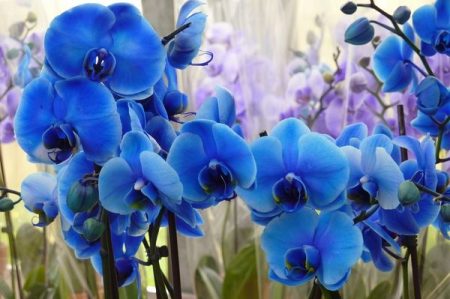
Care after purchase
When the flower is brought to a new place, it may begin to fall buds. In such a situation, it is necessary to assess the state of the root system. If the paint was injected into the roots, then helping such a plant will not work. In the case when the pigment was injected into the peduncle itself, the chances that the orchid will come out will be higher.
Find out, why do orchids crack leaves in half.
To resuscitate a colored phalaenopsis, it is necessary to cut off the stem filled with a coloring matter. Then carry out the following manipulations:
- Extract the plant from the pot. This must be done carefully so as not to injure the roots.
- Rinse the root system thoroughly using warm water. In this case, all the roots should be checked for signs of injection. If the paint was introduced through the roots, then rotting will be observed in the area where it was injected.
- All affected areas must be cut off.
- Then, the section zones need to be treated with ash. It is necessary that they dry well.
Further, the flower can be planted in a pot into which a fresh substrate should be poured.
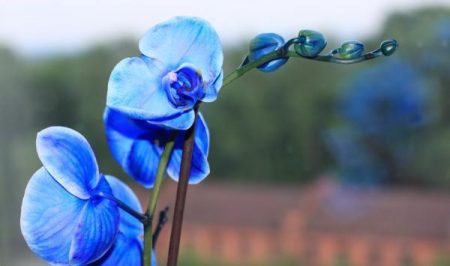
The substrate in which the plant was before, must be discarded. You can’t use it again, because it contains many chemical and other harmful substances that were used to color the phalaenopsis.
Reviews
Reviews of many experienced flower growers recommend refraining from buying blue phalaenopsis, since in the vast majority of cases, the purchase is a fake. Such a flower is likely to be injured. Of course, any plant, even in a neglected state, can be reanimated. But it will take a lot of time and effort. It is better from the very beginning to acquire a healthy orchid of a natural shade, which will long delight the eye with its luxurious flowering.

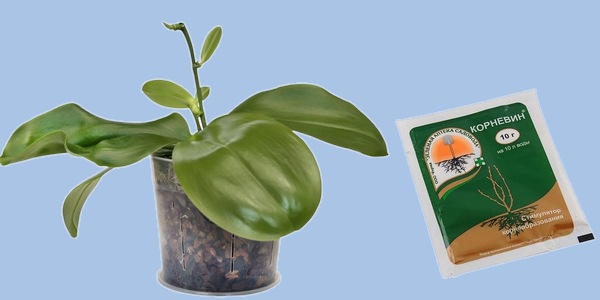
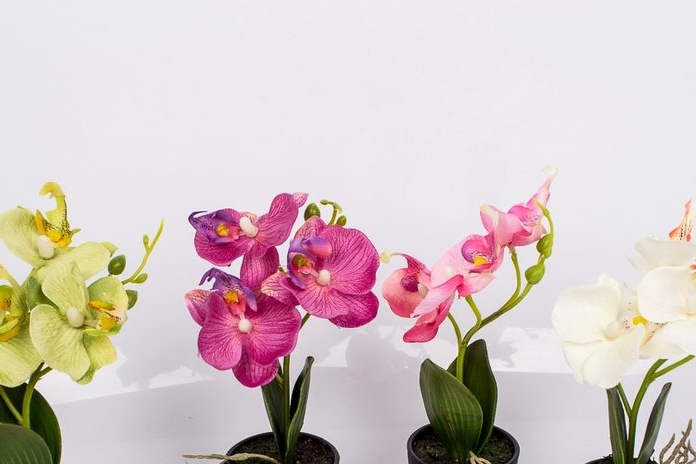
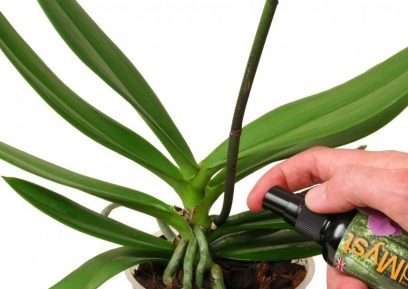
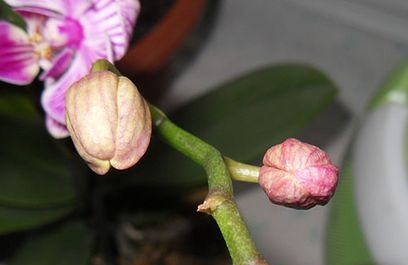 Reasons why orchids fall flowers and what to do
Reasons why orchids fall flowers and what to do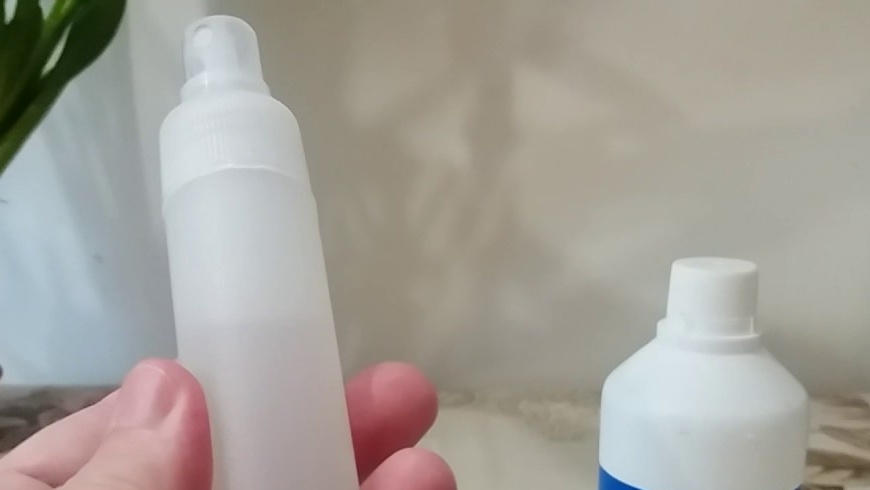 How to use hydrogen peroxide for orchids and why
How to use hydrogen peroxide for orchids and why Midges are wound up in the orchid: effective ways to get rid
Midges are wound up in the orchid: effective ways to get rid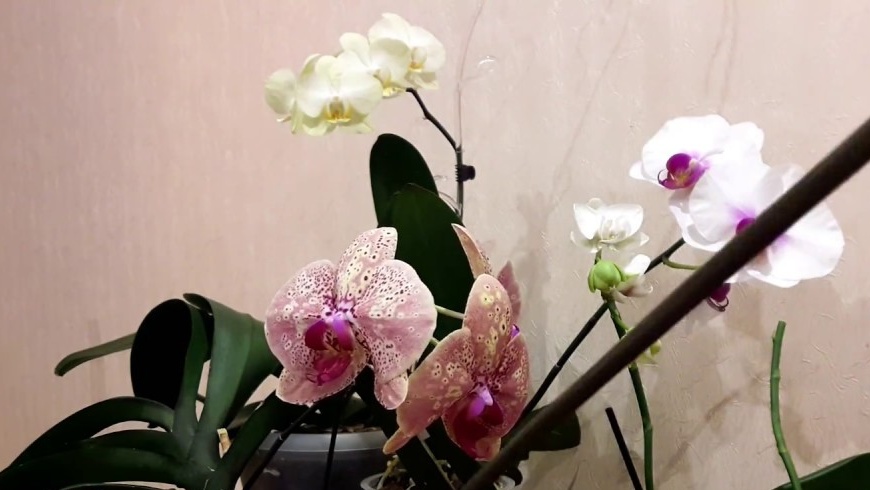 Is it possible to transplant an orchid during flowering
Is it possible to transplant an orchid during flowering